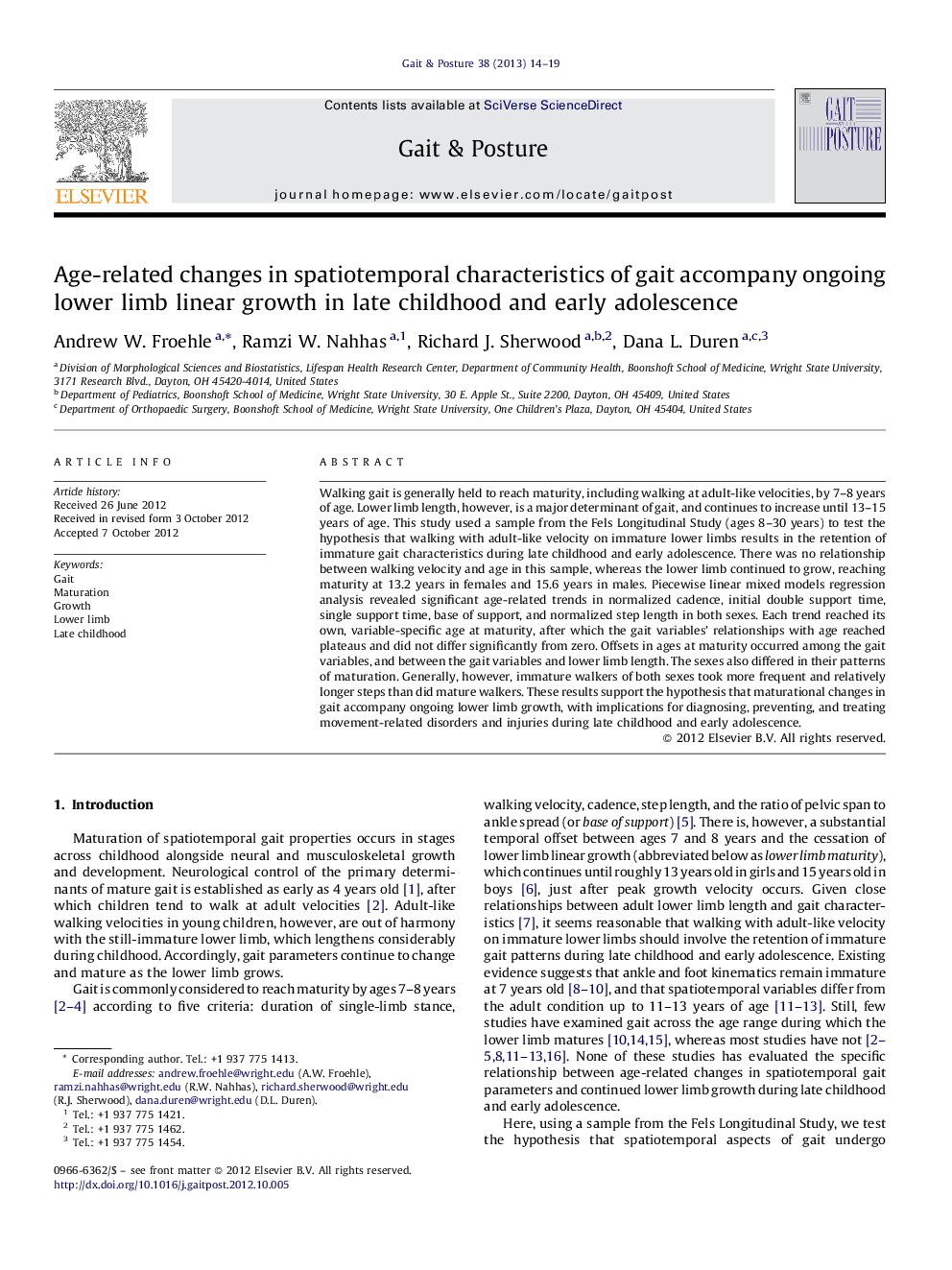| کد مقاله | کد نشریه | سال انتشار | مقاله انگلیسی | نسخه تمام متن |
|---|---|---|---|---|
| 6207483 | 1265662 | 2013 | 6 صفحه PDF | دانلود رایگان |
Walking gait is generally held to reach maturity, including walking at adult-like velocities, by 7-8 years of age. Lower limb length, however, is a major determinant of gait, and continues to increase until 13-15 years of age. This study used a sample from the Fels Longitudinal Study (ages 8-30 years) to test the hypothesis that walking with adult-like velocity on immature lower limbs results in the retention of immature gait characteristics during late childhood and early adolescence. There was no relationship between walking velocity and age in this sample, whereas the lower limb continued to grow, reaching maturity at 13.2 years in females and 15.6 years in males. Piecewise linear mixed models regression analysis revealed significant age-related trends in normalized cadence, initial double support time, single support time, base of support, and normalized step length in both sexes. Each trend reached its own, variable-specific age at maturity, after which the gait variables' relationships with age reached plateaus and did not differ significantly from zero. Offsets in ages at maturity occurred among the gait variables, and between the gait variables and lower limb length. The sexes also differed in their patterns of maturation. Generally, however, immature walkers of both sexes took more frequent and relatively longer steps than did mature walkers. These results support the hypothesis that maturational changes in gait accompany ongoing lower limb growth, with implications for diagnosing, preventing, and treating movement-related disorders and injuries during late childhood and early adolescence.
⺠Children and adolescents walk with adult-like velocity despite immature lower limbs. ⺠Spatiotemporal aspects of gait remain immature while lower limb growth continues. ⺠Gait parameter ages at maturity are somewhat offset from lower limb age at maturity. ⺠Males and females differ in rates of change and ages at maturity of gait parameters. ⺠Immature gait patterns approach the walk-run transition at self-selected velocity.
Journal: Gait & Posture - Volume 38, Issue 1, May 2013, Pages 14-19
